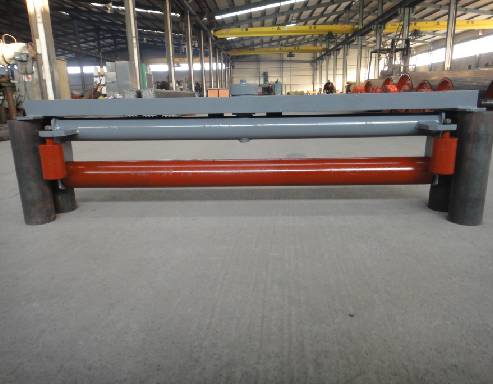 Afrikaans
Afrikaans  Albanian
Albanian  Amharic
Amharic  Arabic
Arabic  Armenian
Armenian  Azerbaijani
Azerbaijani  Basque
Basque  Belarusian
Belarusian  Bengali
Bengali  Bosnian
Bosnian  Bulgarian
Bulgarian  Catalan
Catalan  Cebuano
Cebuano  Corsican
Corsican  Croatian
Croatian  Czech
Czech  Danish
Danish  Dutch
Dutch  English
English  Esperanto
Esperanto  Estonian
Estonian  Finnish
Finnish  French
French  Frisian
Frisian  Galician
Galician  Georgian
Georgian  German
German  Greek
Greek  Gujarati
Gujarati  Haitian Creole
Haitian Creole  hausa
hausa  hawaiian
hawaiian  Hebrew
Hebrew  Hindi
Hindi  Miao
Miao  Hungarian
Hungarian  Icelandic
Icelandic  igbo
igbo  Indonesian
Indonesian  irish
irish  Italian
Italian  Japanese
Japanese  Javanese
Javanese  Kannada
Kannada  kazakh
kazakh  Khmer
Khmer  Rwandese
Rwandese  Korean
Korean  Kurdish
Kurdish  Kyrgyz
Kyrgyz  Lao
Lao  Latin
Latin  Latvian
Latvian  Lithuanian
Lithuanian  Luxembourgish
Luxembourgish  Macedonian
Macedonian  Malgashi
Malgashi  Malay
Malay  Malayalam
Malayalam  Maltese
Maltese  Maori
Maori  Marathi
Marathi  Mongolian
Mongolian  Myanmar
Myanmar  Nepali
Nepali  Norwegian
Norwegian  Norwegian
Norwegian  Occitan
Occitan  Pashto
Pashto  Persian
Persian  Polish
Polish  Portuguese
Portuguese  Punjabi
Punjabi  Romanian
Romanian  Russian
Russian  Samoan
Samoan  Scottish Gaelic
Scottish Gaelic  Serbian
Serbian  Sesotho
Sesotho  Shona
Shona  Sindhi
Sindhi  Sinhala
Sinhala  Slovak
Slovak  Slovenian
Slovenian  Somali
Somali  Spanish
Spanish  Sundanese
Sundanese  Swahili
Swahili  Swedish
Swedish  Tagalog
Tagalog  Tajik
Tajik  Tamil
Tamil  Tatar
Tatar  Telugu
Telugu  Thai
Thai  Turkish
Turkish  Turkmen
Turkmen  Ukrainian
Ukrainian  Urdu
Urdu  Uighur
Uighur  Uzbek
Uzbek  Vietnamese
Vietnamese  Welsh
Welsh  Bantu
Bantu  Yiddish
Yiddish  Yoruba
Yoruba  Zulu
Zulu conveyor bend pulley
The Importance of Conveyor Bend Pulleys in Material Handling
Conveyor systems are integral to modern industries, facilitating the transport of materials in a streamlined and efficient manner. At the heart of these systems lies a crucial component the bend pulley. While often overlooked, the bend pulley plays a vital role in ensuring the efficiency and longevity of conveyor belts, particularly in complex layouts where the path of transportation is not linear.
Understanding the Function of Bend Pulleys
Bend pulleys are specifically designed to guide conveyor belts around curves and corners. Unlike standard pulleys that typically drive or redirect the belt in a more linear trajectory, bend pulleys enable the belt to navigate bends smoothly, maintaining tension and alignment. This is essential for preventing belt misalignment or slippage, which can lead to material losses and increased wear on the conveyor system.
A bend pulley does more than just aid in directional changes; it also helps in maintaining proper tension within the belt. Tension is vital in ensuring that the belt operates efficiently without sagging, which can lead to material spillage and increased operational costs. Furthermore, an appropriately tensioned belt reduces the risk of excessive wear on both the belt and the pulleys, extending the overall lifespan of the conveyor system.
Choosing the Right Bend Pulley
Selecting the right bend pulley is critical for the optimal functioning of a conveyor system. Factors such as belt width, the radius of curvature, and the material being transported must be considered. The design of the bend pulley should accommodate the specific dynamic and static load requirements based on these factors. Additionally, the angle of the bend will influence the construction material of the pulley, which could be metal or composite, depending on the operational environment.
conveyor bend pulley

Innovative designs have emerged for bend pulleys, incorporating features such as rubber lagging. This adds friction, improving belt traction and reducing slippage. The surface texture of the pulley can also be engineered to match the belt type, ensuring a seamless interaction and minimal wear over time.
Maintenance of Bend Pulleys
Regular maintenance of bend pulleys is essential to prevent operational downtimes and costly repairs. Inspections should be routine, focusing on signs of wear, misalignment, and any buildup of materials on the pulley surface that could affect performance. Proper lubrication should also be applied to minimize friction and ensure smooth operation.
Another critical aspect is to monitor the condition of the conveyor belt itself. A damaged or worn belt can pose significant challenges for bend pulleys, leading to increased strain and potential failure. Therefore, coordinating the maintenance needs of both the belt and the pulleys is essential for an efficient material handling operation.
Conclusion
In the realm of material handling, conveyor bend pulleys may not always take center stage in discussions about conveyor systems, but their role is undeniably significant. By allowing conveyors to navigate complex paths while maintaining belt tension and alignment, bend pulleys contribute substantially to the overall effectiveness of material transport systems. Industries that prioritize the proper selection, maintenance, and management of bend pulleys are likely to see enhanced efficiency, reduced operational costs, and longer-lasting equipment. As logistics and manufacturing processes continue to evolve, the importance of each component in the conveyor system, including bend pulleys, will only continue to grow.
-
Revolutionizing Conveyor Reliability with Advanced Rubber Lagging PulleysNewsJul.22,2025
-
Powering Precision and Durability with Expert Manufacturers of Conveyor ComponentsNewsJul.22,2025
-
Optimizing Conveyor Systems with Advanced Conveyor AccessoriesNewsJul.22,2025
-
Maximize Conveyor Efficiency with Quality Conveyor Idler PulleysNewsJul.22,2025
-
Future-Proof Your Conveyor System with High-Performance Polyurethane RollerNewsJul.22,2025
-
Driving Efficiency Forward with Quality Idlers and RollersNewsJul.22,2025





























